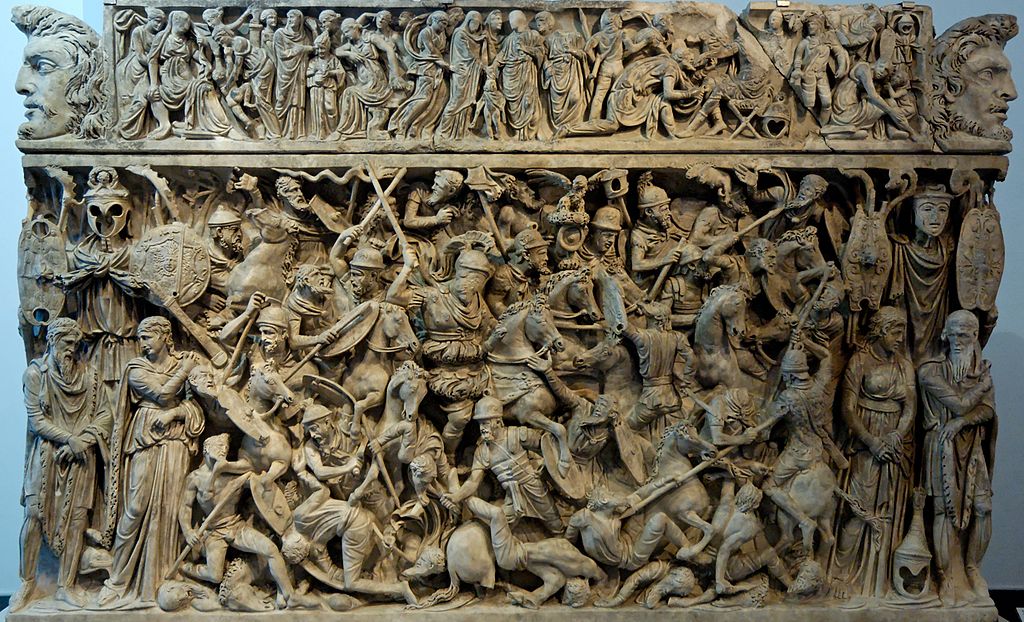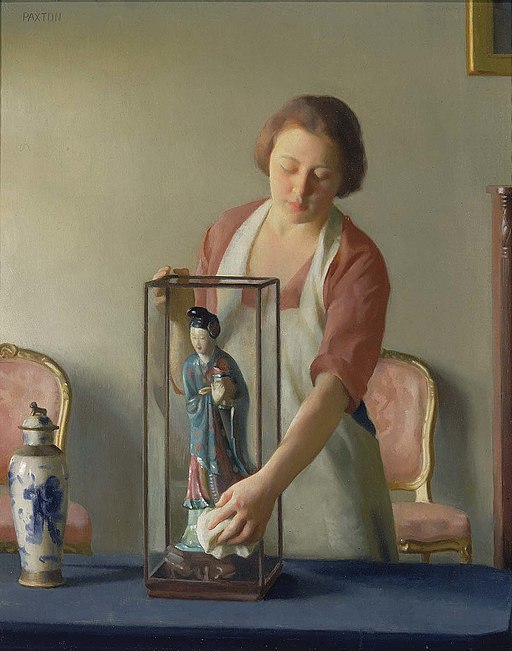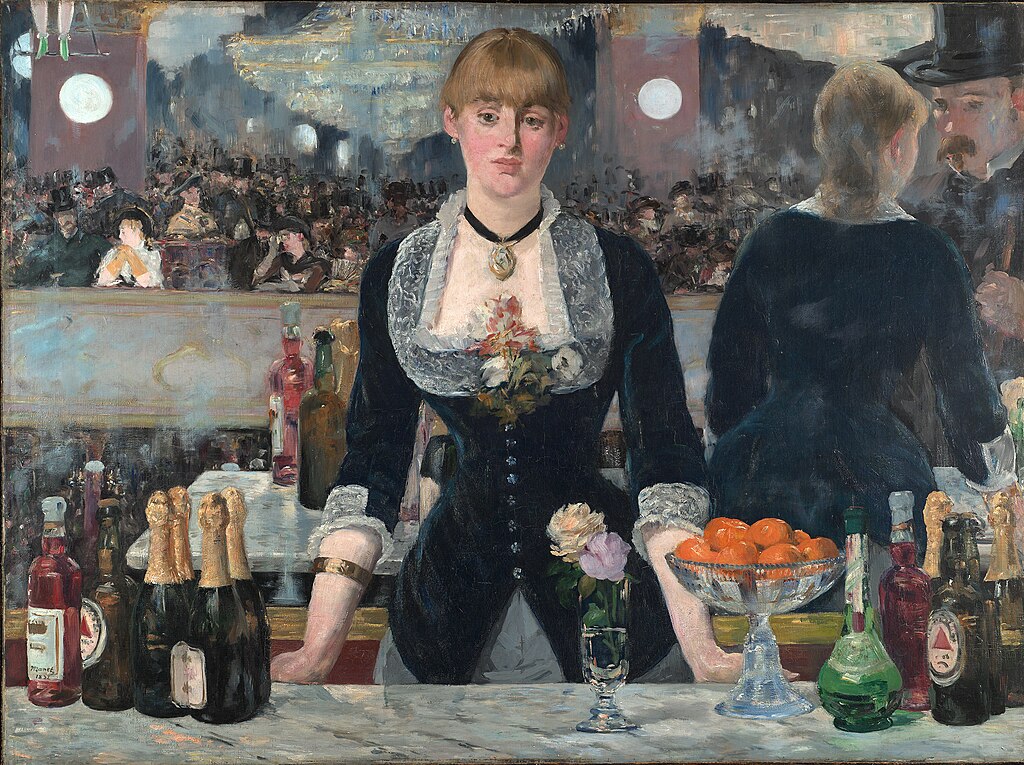
“Road with Cypress and Star” by Vincent van Gogh is the last painting he made in Saint-Rémy-de-Provence, France. This view is not an actual landscape scene but a composition of the symbols or images that became important to Van Gogh and which expressed his feeling at this point in his life.
The large cypress tree in the middle of the composition acts like a giant obelisk dividing the piece. The pair of travelers are on their journey of companionship that Van Gogh had been seeking for so long and could not find. There are also two people in the horse-driven cart.
Van Gogh entered the Saint-Paul-de-Mausole asylum, a former monastery in Saint-Rémy in May 1889. Van Gogh had two cells with barred windows, one of which he used as a studio.
He was allowed short supervised walks, during which time he painted cypresses and olive trees, including this painting “Road with Cypress and Star.” Some of his works from this time are characterized by swirling stars in the night sky, such as this painting and “The Starry Night.”
Van Gogh was experimenting with his use of color and brushwork. Many of his works at this time are composed of graceful forms and swirling lines. The short, rhythmic wavy brushstrokes placed side by side engenders this painting with dynamism.
In an earlier letter to his brother Theo, van Gogh wrote that cypresses were:
“always occupying [his] thoughts.”
Vincent van Gogh found cypress trees “beautiful of line” and proportioned like an Egyptian obelisk. He wrote to his brother Theo:
“It astonishes me that no one has yet done them as I see them. It’s beautiful as regards lines and proportions, like an Egyptian obelisk. And the green has such a distinguished quality.”
After finishing this work, Van Gogh wrote to Paul Gauguin that the painting’s themes are similar to those of Gauguin’s work “Christ in the Garden of Olives.”
Christian allegory from “The Pilgrim’s Progress,” which Vincent had read, may have influenced this painting. The prominent road and cypress tree both extend beyond the edges of the canvas symbolizing the journey of life.
Art historians believe these paintings reflect van Gogh’s feelings that he would soon die. His paintings with the cypress trees and the swirling sky were metaphors for life in the infinite and eternal cosmos.
The evening star and crescent moon on either side of the tree are a cosmic perspective to the earthly scene below. Symbolically, the evening star on the left of the painting is not shown as potent as the emerging crescent moon on the right side.
The orientation of the night sky objects may have been influenced by a conjunction of heavenly bodies on 20 April 1890, when Mercury and Venus were at 3 degrees of separation and together had luminescence comparable to Sirius.
In May 1890, Van Gogh left the clinic in Saint-Rémy to move near to Dr. Paul Gachet in the Paris suburb of Auvers-Sur-Oise. Vincent died on 27 July 1890, aged 37.
Vincent van Gogh
Vincent Willem van Gogh is among the most famous and influential figures in the history of Western art. Van Gogh was unsuccessful during his lifetime and was considered a madman and a failure.
He created about 2,100 artworks, including around 860 oil paintings, most of them in the last two years of his life.
They were characterized by bold colors and dramatic, impulsive, and expressive brushwork that contributed to the foundations of modern art.
Saint-Rémy – Road with Cypress and Star
- Title: Saint-Rémy – Road with Cypress and Star
- Dutch: Cypres bij sterrennacht
- Also: Country Road in Provence by Night,
- Artist: Vincent van Gogh
- Year: May 1890
- Medium: Oil on canvas
- Dimensions Height: 92 cm (36.2 in); Width: 73 cm (28.7 in)
- Movement: post-Impressionist
- Museum: Kröller-Müller Museum
Gauguin’s Chair
- Title: Gauguin’s Chair
- Dutch: De stoel van Gauguin
- Artist: Vincent van Gogh
- Year: 1888
- Medium: Oil on canvas
- Dimensions Height: 90.3 cm (35.5 in); Width: 72.5 cm (28.5 in)
- Museum: Van Gogh Museum
Vincent van Gogh
- Name: Vincent Willem van Gogh
- Born: 1853 – Zundert, Netherlands
- Died: 1890 (aged 37) – Auvers-Sur-Oise, France
- Resting place: Cimetière d’Auvers-Sur-Oise, Auvers-Sur-Oise, France
- Nationality: Dutch
- Movement: Post-Impressionism
- Notable works:
- Starry Night
- Starry Night Over the Rhône
- Sunflowers
- Irises (Getty Museum)
- Self Portrait, dedicated to Paul Gauguin
- Portrait of the Postman Joseph Roulin
- White House at Night
- The Night Café
- Self-Portrait as a Painter
- Self Portrait with Felt Hat
- Green Wheat Field with Cypress
- The Raising of Lazarus
- Self-Portrait Mutilated Ear
- Café Terrace at Night
- Tarascon Stagecoach
- Wheatfield with Crows
- Bedroom in Arles
- Portrait of the Artist’s Mother
- Vase with Red Poppies
- Memory of the Garden at Etten
- Great Peacock Moth
- Farmhouse in Provence
- Agostina Segatori Sitting in the Café du Tambourin
- Fishing Boats on the Beach at Saintes-Maries
- Seascape at Saintes-Maries
- Girl in White
- Young Peasant Woman with Straw Hat Sitting in the Wheat
- Van Gogh’s Chair
- Gauguin’s Chair
- Saint-Rémy – Road with Cypress and Star
Facts about Vincent van Gogh
- Van Gogh was born in the Netherlands
- Initially, van Gogh planned to be a pastor and worked as a lay preacher in Belgium. It was only on being let go from this job that he decided that his future lay in painting.
- Van Gogh didn’t start painting until he was 27 years old.
- Van Gogh never received any formal art training.
- Van Gogh’s brother, Theo, worked in an art gallery and introduced van Gogh to many artworks.
- Van Gogh visited many parts of Europe, including the Netherlands, France, Belgium, and England.
- Japanese woodblock prints profoundly influenced Van Gogh. He collected pictures of Japanese woodblock prints, and he practiced making copies.
- Van Gogh had several close relationships with many fellow artists, including Paul Gaugin and Emile Bernard.
- Van Gogh’s artistic career was only ten years.
- Van Gogh was a prolific letter writer, especially to his brother.
- He created over 900 paintings plus many more drawings and sketches.
- He died at the age of 37
- As a poor artist, van Gogh didn’t have money to pay for models, so he painted himself instead. He created hundreds of self-portraits.
- Van Gogh considered himself and many of his paintings to be failures.
- Van Gogh cut off his ear in 1888.
- Experts believe that that Gaugin cut off Van Gogh’s ear, following a violent dispute and that they both conspired to blame it on van Gogh so that Gaugin would not be jailed.
- Van Gogh wrapped up his removed ear and gave it to a prostitute in a nearby brothel.
- Van Gogh suffered mental health challenges for many years, and in 1889 he voluntarily admitted himself to a psychiatric hospital in Saint-Rémy.
- Van Gogh spent a year in the hospital, from which he created some of his most well-known paintings.
- Van Gogh spent his adult life in poverty, surviving on cheap food. His diet consisted mainly of bread and coffee; he drank alcohol excessively and always had his pipe in hand.
- After leaving the asylum, Van Gogh’s mental health continued to deteriorate, and in 1890, he shot himself in the chest. He died two days later.
- There is speculation that Van Gogh did not shoot himself but that he was shot in a prank that went wrong. Van Gogh protected the identity of who shot him, by claiming that he shot himself.
- Only 37 years old when he died, he had just sold one painting in his lifetime.
- On his deathbed, van Gogh’s last words to his brother were, “the sadness will last forever.”
- Van Gogh’s brother died very soon after Van Gogh’s death.
Who Was Vincent Van Gogh?
Vincent Van Gogh Paintings
~~~
“The best way to know God is to love many things.”
– Vincent van Gogh
~~~
Photo Credit: 1) Vincent van Gogh [Public domain], via Wikimedia Commons
Popular this Week








 Sponsor your Favorite Page
Sponsor your Favorite Page SEARCH Search for: Search Follow UsJoin – The JOM Membership Program
Sponsor a Masterpiece with YOUR NAME CHOICE for $5
Share this:
- Tweet
